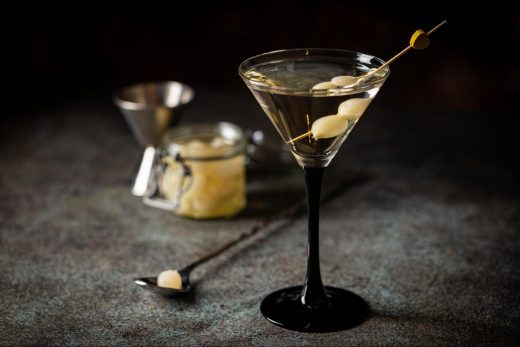
What types of experiences and flavors do people want from their drinks and bars? Just like the restaurant industry, the beverage industry continues to evolve. This edition of Weekly Bites covers three stories that point to where the beverage industry might be going next. From bar reservations to the martini come-back and specialized hops, we’ll give you something to sip on.
Want a drink? Make a reservation
Booking a reservation months ahead of time is the best way to get into the hottest restaurants. But for bars, the name of the game has been waiting in line. Getting a drink could either mean a spontaneous outing at your neighborhood bar, or hours waiting to get into an exclusive new lounge.
Now, reservations are coming to bars, too. The idea is to eliminate long waits and time spent pressed up against other sweaty people in an attempt to get the bartender’s attention. Reservation apps like Resy and OpenTable are allowing patrons to make reservations in time blocks (typically two hours) to get a drink.
Is the future of bar patronage reservations? Some say that reservations are an equalizer when it comes to patronizing high-end cocktails. Instead of waiting forever (which not everyone can do), or having to know a person who knows a person, all you need is a phone to reserve a spot.
Others are lamenting the seeming end of an era, and a future where every single activity needs to be planned out weeks in advance. We’ll keep an eye on this emerging trend to see if it sticks around.
Shaken, stirred, dirty, or dry: the age of the martini
Ask any bartender, and they’ll tell you martinis are the hottest drink anywhere. Whether it’s a classic gin martini or a more colorful variation, it seems like everyone is craving the classy martini.
The old-turned-new-again trend can be traced back to the rise in popularity of the espresso martini. Anyone who’s watched even one episode of Below Deck would know the comeback was imminent — the luxury yacht crew served drink after drink of the stuff, only to down their own during their days off.
What is it about the martini that’s capturing people’s attention?
Some of the newest post-pandemic food and beverage trends point to consumers’ desires for either sophisticated classics, or unironic kitschy flavors. The beauty of the martini is that it does both.
Purists love the simplicity of a classic gin martini — high quality gin, very dry vermouth, and olive brine. You can only have an odd number of olives as garnish, since an even number is said to bring bad luck.
Of course, the simplicity of the drink lends itself to endless creative iterations. These “kitschy ‘tinis” are colorful elixirs made with bold and totally not traditional ingredients, like passionfruit or mango.
In addition to the drink itself surging in popularity, the classic martini service is shaking the dust of time off and making its way to more and more bars. What does this mean for the overall experience that patrons crave nowadays? Are people wanting a slower, more sophisticated experience?
Where are your hops from?
Wine and scotch aficionados often talk about terroir — the characteristics of taste and aroma that come from the very earth that ingredients are grown in. Terroir is all about understanding how locale changes the drink. For scotch, it means understanding the differences in taste between fruity scotches from the Highlands and the deeply briny and smoky scotches of Islay.
A new study from Oregon State University confirms what beer brewers have long understood — hops have terroir. This means that hops will impart different flavor in the beer depending on where it’s grown.
Hop producers are starting to open their own tasting rooms, hoping to entice brewers to choose their offerings based on the unique characteristics of the locale. Unlike scotch and wine, however, a lot more goes into beer than just hops. Given the influence of other ingredients, can we start to talk about the terroir of beer? It’s unlikely, unless brewers are particular about where they source their grains and water as well.


